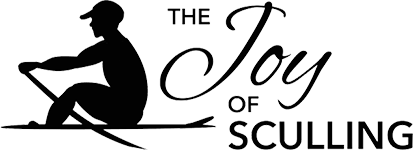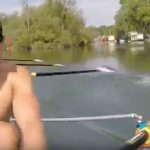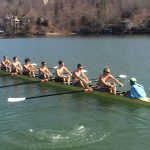Drills for Watermen
A key point with respect to our practices and how they differ from other is that we open up our minds and begin to realize that as waterman we have a totally different set of expectations from the time we leave the dock, while we are in the shell and how we should approach our total shell experience each and every time we set out to explore our environment.
Our physical, mental and spiritual objectives are vastly different from the orthodox rowing and as such the methods available to us for our training are different and we need to realize this.
Let us explore some new feelings and observations you might generate within yourself based upon revisiting some of your slow motion and stationary drills and set pieces which you have not taken time with in a few months due to being in let’s say a cold water environment. Today I encountered a nice little 500 meters glassed up area so I had some fun feeling and observe what I was doing.
Using both my regular vision, my minds eye and sound, I noticed things that I had not seen in myself before and also I was doing things differently at certain times. But, more importantly, I was taking away so new and different things from our drills that I previously had not been either looking for or possibly did not have the skill set previously to comprehend the feedback the drill was attempting to give me.
So here are some examples of drills I did and what I was noticing within myself and the outside world as well.
First off I worked our “modified set in” drill for a while. I had forgotten or never maybe realized how much this little drill, which covers basically zero meters distance, brings just a vast amount of information to ones self with respect to your body movements and understanding of where you are in “space/time”.
This is the drill where we sit at rear deck (at the release), legs down, posture nice and tall, blades squared, in the water at blade depth … Not your depth. Hands just as light as you think you should be. Next, proceed to take the stroke, all the way to top deck (at the catch) set in and then lock and load the blades back to full on square using your Waterman’s stroke and proper entry. Let the blades square and lock it, and then just sit there at top deck and don’t move. No forward motion, except what might have been induced upon you recovery, but nothing from the set in and lock. Take time to simply think and observe using all of ones senses.
Are you employing all the things that you think you know? Observe, feel and see where this takes ones self. Then reset and reload at the release. Wash rinse and repeat the drill. Remembering to breath.
Doing this drill was simply wonderful. I had the think of posture.
The handles being tapped down to make 1/4 of the blade appear yet at that very instance my hands had to blend in with that action to begin the feather yet my body had for the briefest of time had to stay silent and then as my hands moved forth my hips had to begin to flex, my legs had to remain silent for again a brief instant until the traverse of the slide was ready to begin.
For the blade carry height on the recovery should be two inches or so above the water. This is a nice goal but it of course that begets the question of what is two inches when I am in a rough conditions verses perfectly flat water? Yes two inches can be a nice benchmark to think of or maybe we just say keep the blades ”low”.
When the release is executed properly and is clean I am finding the blade will come out of the water and will be at a carry height that is set for the conditions. I mean set height wise so I am either nice a low on “glass” or my blades are at a completely different height for rough conditions. But, here is the beauty of the stroke style. Rough or glass smooth the blades when extracted properly are naturally at just high enough to clear well the top of the waves. Additionally, I will say that is well over two inches of clearance above the trough of rough water waves (of course) but maybe only 1” over the peak of the waves in rough water.
This is part of the beauty of what we have the ability to deal with. Dynamic situations in a dynamic chaotic environment. The orthodox rower looks for absolutes and a quantum world is probabilistic. These are the scientific hallmarks that authors such as Bohm, Tesla, Hamil and all of today’s contemporaries are now working with. So yes we can give say “bench marks” such as say two inches for a carry height. But I think we must impress upon developing waterman that that number is relative. It has a probability assigned to it. If the release is a well executed “Waterman’s Release” that will set the stage for a good carry height.
Then the recovery continues to traverse forth until it was time to drop the blade upon the water and right at that instant I thought of the ”salt shaker”. It was a great exploration.
With respect to the knees at entry, I can only go by myself and how Coach has trained me. My knees “froggy leg” out as I say. As the blades meet the water I attempt to have my posture so as I am sitting tall at entry, my knees are open and under my arm pits. I do not keep my knees together as I roll towards the stern. In fact I think it my have been the sculler Harry Clasper that said “the only thing anyone ever told me about sculling was to let my chest and belly protrude thru my knees at entry otherwise you won’t be able to breath laddie”. That was a long time ago yet these fellows already knew that the legs should splay out as one approached entry and that one should be on the “balls of the feet” at entry as well. This type of leg position immediately sets the oar up for the water phase of the stoke much like “getting up from a chair” as one sets back from a kitchen table.
This then begets the “salt shaker”. So now as one is visualizing getting up from the chair at the table reach you hand out, grab the “salt shaker”, think about standing up and at the same time “don’t forget the salt shaker as you sprinkle salt over your shoulder”. See the hip flexors have to open up at the same instant you are standing if you are going to perform this action. It is the hips opening with the froggy legs closing and the outstretched arm holding the salt shaker. Now just sit in the shell, your handle is the salt shaker and move towards the bow. Simple to describe but the integration of the movements requires an understanding and the ability to visualize. This is why the Coach’s eye and the Minds eye are key to this effort. In a dynamic chaotic world that waterman traditionally resided, fractal discrete quantifications were very very difficult to obtain and as such they never bothered with discrete points but observed the “whole”. Once we begin to understand our Waterman’s Drills both physical and mental the sculler can begin to develop their skills.
Where does the trunk movement end on the “front end”? I believe I would say that trunk movement is relative. The only time that any trunk movement is not visible is for the briefest of instants when the pendulum (think Hanlan) changes direction. That is it. This is a totally foreign concept to orthodox folks. At the release and at the entry, each change of direction, there is a “snippet in time” when the body/trunk is silent however the hands and arms never ever stop. Ever. Think about that but see that is another set of drills that we as waterman have in our portfolio which may not much sense to others.
There is no segmenting of legs-body-arms style which is taught with the orthodox stroke. No, but it is instead a blending of hips and body and a connection and firmness, the feel of being instantly “locked the blade solid” in a flash … and then I would stop any and all movement and sit.
One of the things I find fascinating is how it seems, in a blink of the eye, that he salt shaker movement will instantly lock and load the blades. I mean as quick as you can snap your fingers. This very feel corresponds to how in a mere instant blade loading can occur using a scullers entry. Like BANG and it is game on.
The folks who speak of missed water with a Waterman’s stroke cannot understand what the take away is from this drill, let alone perform it.
This goes to one of the aspects of our rowing style in that orthodox rowers cannot perform many of the drills we as waterman style scullers demand. With Coach (Jimmy Joy), we developed a very demanding set of “drills for watermen” as I am going to start calling them.
These drill may appear simple to orthodox rowing folks but they are the embodiment of what is demanded for developing waterman skills.
I have also been working my fixed seat drills. Last season I also started to do “rear deck flat blade” starts based upon chatting with Coach and also reading about the history that relates to what I was performing.
Well these last couple of days I have been thinking about how the old fixed seat rowers would have performed a start? They were using a scullers entry, water conditions were putrid at best with all the gambling boats running about, the tide, the commercial boats etc etc. I mean we cancel a race now if it was two inch waves or a 5 knot wind. Yet these boys in fixed seats were performing starts off stake boats in water just roiling and churning and they got no re-do’s either. So how’s did they do this anyway?
They did rear deck, flat blade. They must have. Then the flag was dropped. No legs because there was no slide. It was hip flexor, blade locked and loaded. Salt shaker and on that very first stroke the shell is off and moving toward the finish line, no skip or crab. Just good positive quick movement, lift and proper posture and then … then on the second stroke I think Hanlan began to use the slide.
Well I tried this the last several days and I am going to try it racing this summer. I am very curious to see how this will go. See we as the “new explorers” of things past. We can try these concepts and have fun racing where by the orthodox rowers have this tiny window of acceptable things or what might be called very limited “boundary condition” in which they can race and scull because of the stroke pattern. What the waterman knew and explored was a gigantic operating window which they were afforded the opportunity to experience by the very nature of the style of stroke they used. It affected and gave great depth to their work, racing and having fun experiences.

















